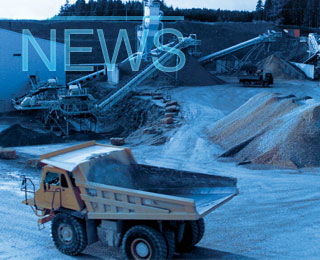Cemex Concrete (M) Sdn Bhd (Cemex Malaysia) is doubling its capital expenditure this year as the continuation of infrastructure building activities would be sufficient to sustain the demand for building materials, according to country director Fikry El-Kaissouni.
"There has been steady growth in the Malaysian construction market. This is something that gives comfort to large companies like Cemex [Malaysia] to enter the market," El-Kaissouni told The Edge Financial Daily.
"Malaysia is a strong market, especially in Kuala Lumpur," he added. According to El-Kaissouni, there is a new capacity of 1.3Mt coming onstream this month, and there are a few more production lines in the pipeline.
"If demand were fulfilled completely, you will not have a situation of a cement player switching on their kilns. "We have already gone through a healthy pick-up this year. We are excited with the way the market is moving and we think next year is going to be as good [as this year]," he said.
El-Kaissouni said the stable economic growth the country is experiencing, as opposed to other world economies, is reflected in the healthy growth of the construction industry.
"The economy reflects the industry growth. In Malaysia, construction [industry growth] is strongly reflected in the real estate prices, especially in Kuala Lumpur."
"The value that is placed on 'affordable housing' in Malaysia today, is considered premium housing in a lot of countries. So, it is definitely not a country that is suffering from a shortage of demand (in the construction industry)," said El-Kaissouni.
El-Kaissouni shares the view that Asia is the hotspot for growth in view of the uncertainties in the Western economies. "No one in their right mind would not eye Malaysia and Southeast Asia as a potential for growth now, given the economic situation in other countries," he said, citing the ailing European economy as an example.
Cemex Malaysia has 15 ready-mixed plants in Peninsular Malaysia and one plant in Kuching, Sarawak. El-Kaissouni estimates that Cemex Malaysia has captured about seven per cent of the local ready-mixed concrete market.
Nevertheless, in the fragmented industry of building materials, industry players are operating in a competitive environment with thin profit margins.
"The profit margin in cement is relatively more comfortable than concrete products. In the concrete product segment, it is more competitive. Even when you have it (the price) at premium, it is not significant number.
"We have the choice of going after volume, hence, eroding margin in terms of total margin per tonne, but we play on 'value versus volume'. We go after customers that want value, giving us a comfortable margin," El-Kaissouni said.
Despite the challenges of the industry, El-Kaissouni is confident that the construction sector will remain a strong as a result of the constant inflow of mega infrastructure projects rolled out by the government.
On the recent cement price hike initiated by a major market player, he said it demonstrated the maturity of the market, although it was not a move that would augur well for Cemex Malaysia, which needs cement to produce the ready-mixed concrete.
"Cement makes up a big chunk of concrete and is a significant portion of our variable cost. When it changes price, we will have to pass it down because of the tight margin. I am definitely not in favour of cement price hikes," he said.
Apparently, the price hike was not followed by other cement manufacturers. El-Kaissouni sees this as a proof that market forces are in place to dictate prices.
